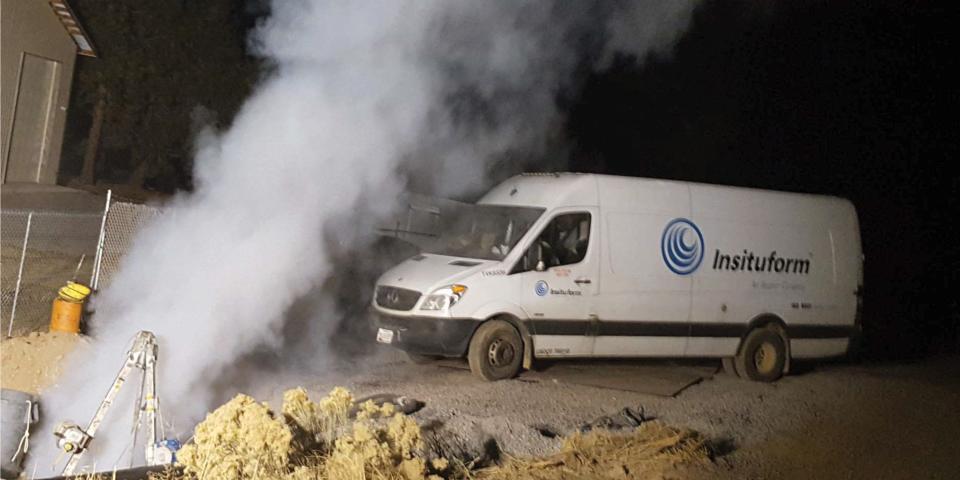A popular underground pipe fix is making people sick: Here’s what we learned from our investigation.
It’s relatively cheap.
It’s more convenient than traditional pipe rehabilitation projects.
And it’s already been used to repair hundreds of millions of miles of underground infrastructure in the United States alone.
Cured-in-place pipe lining is an increasingly popular method of repairing old and damaged sewer and stormwater pipes without having to dig up streets, reroute traffic or haul away debris.
But there's a catch: Noxious fumes created during the process can escape the job site and sicken people in their homes, schools and businesses.
Here are five key takeaways from our recent investigation into the cured-in-place pipe industry that you need to know.
Read the full investigation: A popular, but noxious, piping fix is sickening people. It's throughout America's sewers.
How the CIPP process works
Cured-in-place pipe lining creates a new pipe inside an old one when workers insert a soft, resin-soaked liner into a damaged pipe, inflate it with pressurized air, then heat it with steam, hot water or UV light so it hardens.
During the heating process, volatile organic compounds in the resin mixture are released as a chemical plume that can escape from manholes and travel through the lateral connections linking the main pipe to the properties it serves.
Plumbing fixtures called P-traps are supposed to block these fumes from entering a building through sinks, toilets and drains. But they’re not a failsafe. The emissions can also seep through cracks in the foundation, doors, windows and air intakes.
Learn more about how CIPP works: A common way of fixing pipes is making people sick. Here's how fumes can enter your home.
What happens to people
People exposed to these fumes have described an odor similar to that of epoxy or model airplane glue. Many said it irritates their eyes and throats. Some have experienced nosebleeds. Other common complaints include dizziness, headaches, slowed reaction times, loss of balance, nausea and unconsciousness.
Dozens of incidents from coast to coast have landed people in the hospital, triggered evacuations and sparked lawsuits claiming injuries and even death.
Several people told USA TODAY their symptoms lasted weeks. In some cases, they never went away. At least three workers in two pipe-lining incidents have died after exposure to the chemicals. In October, a Florida woman settled a lawsuit with a contractor she blamed for her 71-year-old mother’s death.
Help USA TODAY investigate the cured-in-place pipe industry
USA TODAY is reporting on noxious fumes from cured-in-place pipe projects. If you have been affected as a worker, a member of the public or in some other capacity, we want to hear from you. We will not use your information without your permission. Contact investigative reporter Emily Le Coz: elecoz@usatoday.com.
What the industry says
The industry claims these fumes are safe and notes that a key compound in the emission – styrene – is found in nature. Mailers, door hangers and FAQs issued by cured-in-place contractors and the cities that hire them tend to omit, deny or downplay the potential health threats.
The National Association of Sewer Service Companies, whose membership includes cured-in-place pipe contractors, has adopted voluntary guidelines to control worksite emissions. It also vigorously rejects evidence of widespread public health risks. In 2017, the association publicly denounced a peer-reviewed study that determined the process releases noxious emissions into the air.
What the research has found
Inside the chemical plume released from cured-in-place pipe projects lurk compounds like styrene, benzene, methylene chloride and phenol, along with bits of uncured resin, partially cured plastic and hazardous air pollutants, according to scientific research funded by the U.S. National Science Foundation and cited by the Centers for Disease Control and Prevention.
A 2017 California Department of Health safety alert noting that the emissions contain potentially toxic chemicals and advising that cities and contractors “should not tell residents the exposures are safe.”
“Persons who detect an odor and experience health symptoms near CIPP installation sites should contact their medical provider and local health department,” the alert said.

Nobody is regulating it
Despite these risks, the cured-in-place pipe-lining industry is completely unregulated when it comes to public health. No state or federal agency actively monitors work sites or requires safety protocols to eliminate or prevent harmful emissions from leaking into the environment.
The U.S. Environmental Protection Agency, in charge of protecting the public from harmful emissions, does not regulate “temporary sources of air pollution” such as that produced during a pop-up operation like a cured-in-place pipe project.
“It’s sort of the Wild West,” said Matt Belcher, a Chicago-based attorney who represented the family of a cured-in-place pipe worker who died on the job in 2017. “Nobody is policing these things.”
This article originally appeared on USA TODAY: Cured-in-place pipe lining is making people sick. Here's what we found

 money
money 